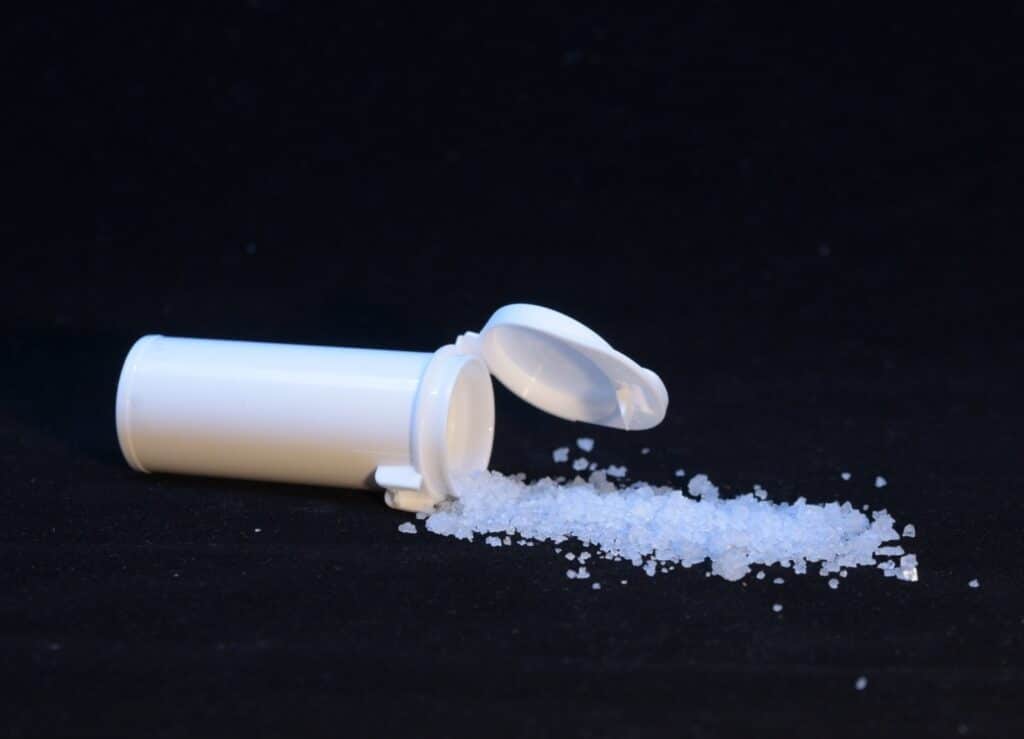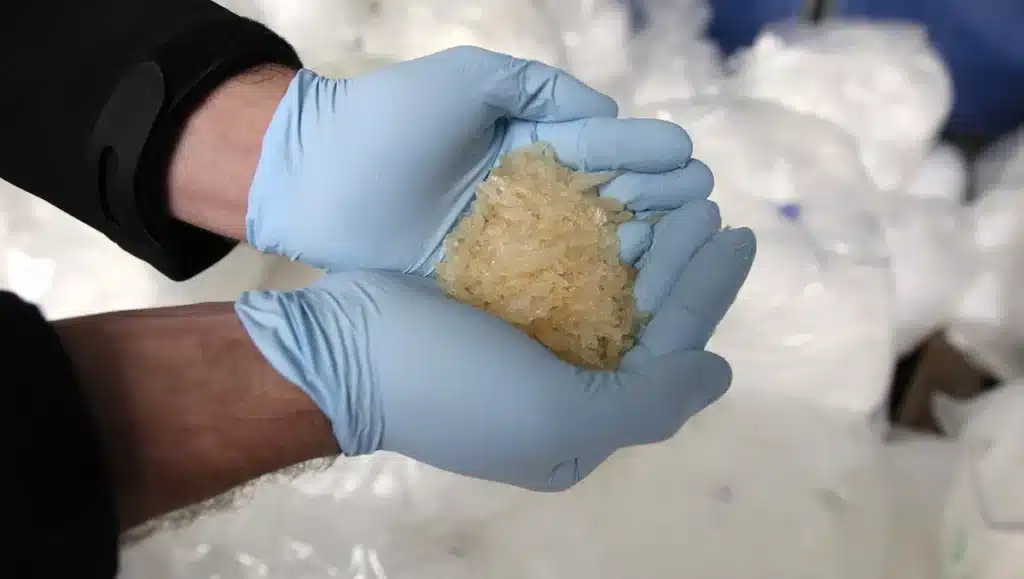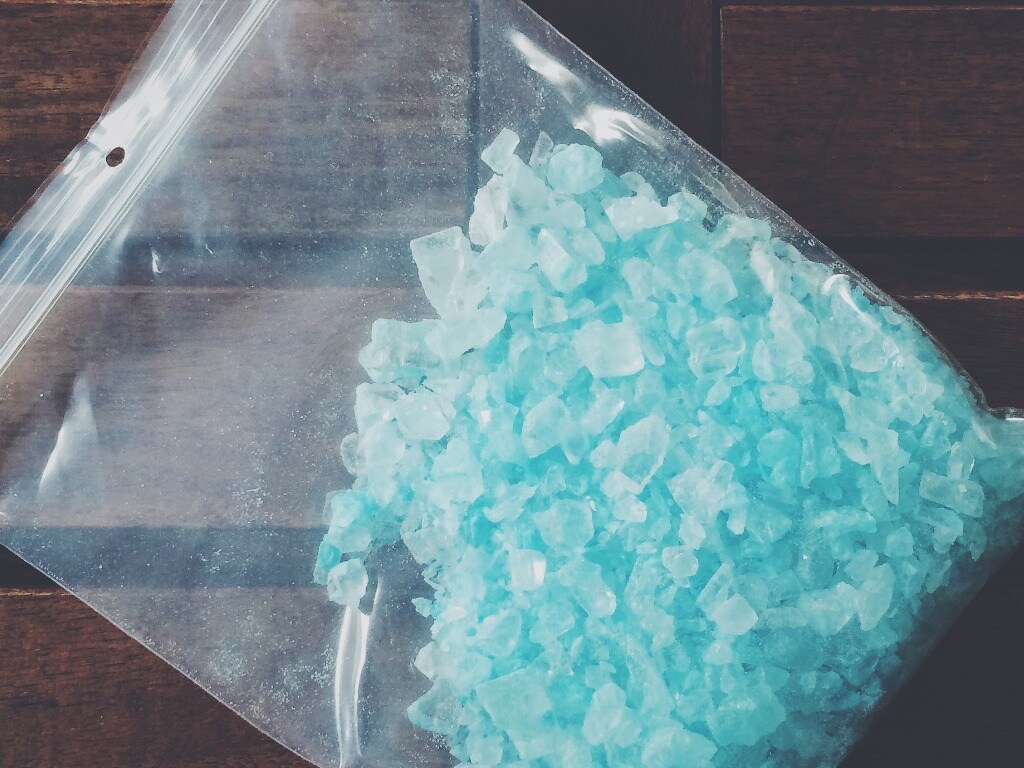In this article, we delve into the dark reality of how to make meth and explore the profound consequences it inflicts upon individuals and society as a whole.
Methamphetamine, commonly known as meth, is a highly addictive and potent stimulant that has wreaked havoc on individuals, families, and communities worldwide.

While its illicit production and use continue to plague society, it is crucial to shed light on the severe consequences that accompany its usage. From profound physical and mental health deterioration to the disintegration of relationships and societal well-being, the repercussions of methamphetamine abuse are far-reaching and devastating.
Read Also: Substance Addiction and How to Deal With It
What is Meth?
Meth, short for methamphetamine, is a highly addictive and illegal synthetic drug that stimulates the central nervous system. It belongs to the amphetamine class of drugs and is known for its powerful stimulant effects.
Methamphetamine can come in different forms, including a white crystalline powder or small translucent crystals, and it can be consumed orally, smoked, snorted, or injected.
Methamphetamine increases the release and blocks the reuptake of certain neurotransmitters, such as dopamine, norepinephrine, and serotonin, leading to increased energy, alertness, and euphoria. However, these effects are short-lived, and methamphetamine abuse can have severe consequences on physical and mental health.

Regular use of methamphetamine can lead to addiction, and it can have detrimental effects on various body systems, including the cardiovascular system, respiratory system, and nervous system.
Methamphetamine abuse is associated with increased heart rate, high blood pressure, insomnia, weight loss, dental problems (often referred to as “meth mouth”), anxiety, paranoia, aggression, and psychosis.
Due to its highly addictive nature and potential for harm, methamphetamine is classified as a Schedule II controlled substance in the United States, indicating its high potential for abuse and limited medical use.
See: How Long Does Alcohol Stay In Your Urine?
What Is Meth Made Of?
The production of methamphetamine relies on readily available ingredients such as ephedrine and pseudoephedrine, which are commonly found in over-the-counter cold medications and weight loss products.

Recognizing the grave implications of this illicit drug, lawmakers have enacted specific regulations to control the purchase and distribution of these crucial ingredients. In this article, we explore the efforts made to regulate the accessibility of these substances, aiming to curb the production and abuse of methamphetamine.
Related: How to Roll a Blunt: A Beginner’s guide
How to Make Meth
The illicit production of methamphetamine involves the combination of ephedrine or pseudoephedrine with other chemicals, many of which are toxic or highly flammable. This concoction is often dissolved in solvents like gasoline and subjected to heat to form crystals.
The unregulated nature of illicit methamphetamine production poses severe risks. Without any oversight or quality control, various cutting agents can be introduced during manufacturing, further compromising the drug’s purity.
The heating stage of production is particularly perilous, as it carries a high potential for fire and explosion. Additionally, the waste materials left behind are unstable and combustible, with the U.S. Forest Service estimating that every pound of methamphetamine yields up to six pounds of toxic waste.
Operating a meth lab has profound detrimental health effects. Inhaling the fumes emitted during production can cause significant damage to the lungs and respiratory system, while direct contact with corrosive and poisonous chemicals poses risks of skin and eye damage.
Read Also: Domestic Abuse: Meaning, Causes, Prevention, and More
Methamphetamine Production Process
The production of methamphetamine typically requires a dedicated space, often referred to as a meth lab, which generates significant amounts of waste and involves the use of various equipment.
These labs involve the use of multiple appliances, such as heating pots and pans, stoves or burners, ventilation hoses, and measures to conceal activities from the outside.
Setting up and maintaining these elaborate meth labs can be both costly and challenging. Furthermore, these clandestine laboratories are prone to detection by law enforcement authorities who actively search for them.
Engaging in methamphetamine production poses serious risks to individuals involved, given the highly volatile and unstable nature of the manufacturing process and the combustible materials used.
Some users and manufacturers have resorted to a method known as “shake and bake,” where ingredients are combined in a plastic or glass container and then agitated and heated to extract methamphetamine.
However, this “instant meth” approach also carries significant dangers. The contents within these containers are extremely volatile and can lead to explosions, particularly during the extraction process.
It is crucial to highlight the hazardous and illegal nature of methamphetamine production, emphasizing the risks to individuals involved and the potential harm caused by these operations.
Hazards of Meth Production
The production of methamphetamine poses numerous hazards and risks to individuals involved in the process, as well as to the environment and communities. Some of the primary hazards associated with meth production include:
- Chemical Exposure: The production process involves handling and combining toxic and volatile chemicals, such as ammonia, lithium, acetone, and various solvents. Inhalation, skin contact, or accidental ingestion of these chemicals can lead to severe health consequences, including respiratory issues, burns, organ damage, and even death.
- Fire and Explosion Risks: The manufacturing process of methamphetamine involves the use of highly flammable substances, such as solvents and gases. The improper handling or storage of these materials and the presence of open flames or sparks increase the risk of fire and explosions, endangering the lives of individuals working in the lab and nearby residents.
- Environmental Contamination: Meth labs generate substantial amounts of hazardous waste, including toxic chemicals, byproducts, and contaminated materials. Improper disposal of these wastes can contaminate soil, water sources, and air, posing serious health risks to wildlife, vegetation, and the surrounding ecosystem.
- Structural Damage: Meth production often involves corrosive chemicals that can cause significant damage to the infrastructure of buildings and properties. This includes deteriorating plumbing systems, electrical wiring, and ventilation, which can lead to long-term safety hazards and costly repairs.
- Public Safety Concerns: Meth labs are a danger to those directly involved and the broader community. The risk of fires, explosions, and chemical leaks can put neighbouring residents, emergency responders, and law enforcement personnel at risk. Methamphetamine production is also associated with criminal activities, violence, and the spread of addiction and related social issues.
Raising awareness about these hazards is crucial to discourage methamphetamine production and promote safe and legal alternatives for individuals struggling with substance abuse. Efforts should focus on education, prevention, and providing support for those affected by methamphetamine addiction.
See Also: Can Cockroaches Live in Your Penis?
Laws and Regulations of meth Production
The production of methamphetamine is highly regulated due to its illicit and dangerous nature. Governments around the world have implemented laws and regulations to control the manufacturing, distribution, and possession of methamphetamine precursor chemicals and equipment. Some of the key laws and regulations related to meth production include:
- Controlled Substances Act (CSA): In the United States, the CSA is a federal law that classifies methamphetamine as a Schedule II controlled substance. It establishes strict penalties for the manufacturing, possession, and distribution of methamphetamine and the precursor chemicals used in its production.
- Precursor Chemical Regulations: Many countries have implemented regulations on precursor chemicals used in the production of methamphetamine, such as ephedrine and pseudoephedrine. These regulations control the sale, distribution, and tracking of these chemicals to prevent their diversion for illicit purposes.
- Licensing and Permits: Some jurisdictions require individuals or businesses involved in the manufacturing or distribution of chemicals with methamphetamine production potential to obtain specific licenses or permits. These licenses often involve strict record-keeping and reporting requirements to monitor the legitimate use of these chemicals.
- International Agreements: Various international agreements, such as the United Nations Convention Against Illicit Traffic in Narcotic Drugs and Psychotropic Substances, aim to combat drug trafficking, including methamphetamine. These agreements promote cooperation among nations to prevent the production, trafficking, and abuse of illicit drugs.
- Environmental Regulations: Meth labs can cause severe environmental damage due to the release of hazardous chemicals and improper waste disposal. Environmental regulations govern the safe handling, transportation, and disposal of hazardous materials to mitigate the environmental impact of meth production.
Law enforcement agencies actively investigate and prosecute individuals involved in illegal meth production. These laws and regulations aim to disrupt the production and distribution of methamphetamine, reduce the associated health and safety risks, and protect communities from the harmful effects of this illicit drug.
Ingredients and Equipment
The production of methamphetamine involves the use of various ingredients and equipment, which are typically obtained through illicit means due to their association with illegal drug manufacturing.
While I can provide information about the components involved, it is crucial to emphasize that manufacturing methamphetamine is illegal and highly dangerous. The following are some commonly used ingredients and equipment:
Ingredients:
- Ephedrine or pseudoephedrine are key precursor chemicals in certain cold medications or weight loss products. They are used to extract the necessary chemicals for methamphetamine synthesis.
- Chemical solvents: Different solvents, such as acetone, toluene, or ether, are employed to extract and purify the active components from the precursor chemicals.
- Reducing agents: Substances like lithium or sodium metal, anhydrous ammonia, or hydrochloric acid are used to facilitate chemical reactions and convert precursor compounds into methamphetamine.
- Other chemicals: Various acids, bases, and catalysts may be involved in the synthesis process to control reaction rates and enhance chemical transformations.
Equipment:
- Glassware and containers: Lab-grade glassware, such as beakers, flasks, and containers, are used to hold and mix chemicals during the synthesis process.
- Heating devices: Bunsen burners, hot plates, or heat guns are used to provide heat for chemical reactions and evaporation of solvents.
- Distillation apparatus: Equipment like condensers and reflux columns may be employed to purify and separate chemical compounds.
- Ventilation systems: Proper ventilation, including fume hoods or exhaust fans, is essential to prevent the accumulation of toxic gases and fumes during manufacturing.
- Safety equipment: Protective gear, such as gloves, goggles, and lab coats, is necessary to ensure personal safety and minimize exposure to hazardous substances.
It is important to reiterate that the production, possession, or distribution of methamphetamine is illegal and carries severe legal penalties. The ingredients and equipment mentioned above should never be used for illicit purposes.
The information provided is for educational purposes only and to raise awareness about the dangers associated with methamphetamine production.
Meth Production Impact on Health, Social and Economic
The production of methamphetamine has significant impacts on the health, social well-being, and economic aspects of individuals and communities. These impacts include:
- Health Consequences: Meth production involves the use of highly toxic chemicals, such as solvents, acids, and gases, which pose serious health risks to those involved in the manufacturing process. Exposure to these chemicals can lead to respiratory problems, skin burns, eye irritation, and other acute and long-term health issues. Additionally, the use of methamphetamine itself can result in addiction, mental health disorders, cognitive impairment, and physical deterioration.
- Social Effects: Meth production can have detrimental effects on individuals, families, and communities. The presence of meth labs often leads to increased crime rates, including violence, theft, and property damage.
Methamphetamine addiction can strain relationships, disrupt family dynamics, and contribute to social isolation. Furthermore, the involvement of vulnerable populations in meth production, such as children or individuals with substance use disorders, exacerbates the social consequences.
3. Economic Impact: Meth production has a negative economic impact at various levels. The costs associated with law enforcement efforts to combat methamphetamine production and trafficking are significant. These costs include investigations, arrests, prosecutions, and incarceration.
Additionally, the healthcare system bears the burden of treating individuals with methamphetamine-related health issues, including emergency room visits, rehabilitation programs, and long-term care. Moreover, methamphetamine use and production can hinder workforce productivity and economic development within affected communities.
Addressing the impacts of meth production requires comprehensive approaches that encompass law enforcement efforts, prevention programs, healthcare interventions, and community support.
By implementing strategies that target both the supply and demand of methamphetamine, societies can strive to mitigate the health, social, and economic consequences associated with this illicit drug.
The process of manufacturing methamphetamine is a dangerous and illegal endeavour with severe consequences for individuals and society as a whole. The production of meth involves the use of hazardous chemicals, highly flammable materials, and volatile processes that pose significant health and safety risks.
Additionally, the illicit nature of meth production contributes to the proliferation of criminal activities, social disruption, and economic burden on communities.
It is crucial to emphasize that the information provided here is for informational purposes only and does not condone or promote the production of methamphetamine.
See Also: Reactive Abuse: Examples, Signs, Effects, Solutions
Conclusion
The aim is to raise awareness about the dangers and negative impacts associated with methamphetamine production and to encourage individuals to seek help and support for substance abuse issues rather than engage in illicit activities.
FAQs for How to Make Meth
Is it possible to make meth at home using common household ingredients?
The drug can be easily made in small clandestine laboratories with relatively inexpensive over-the-counter ingredients such as pseudoephedrine.
What are the risks and dangers associated with the process of methamphetamine production?
The most frequently reported symptoms or health effects were respiratory irritation (53.8%), headache (34.0%), burns (15.4%), and eye irritation
Are there any legal consequences for making methamphetamine?
Meth is a highly dangerous and toxic drug. Federal and state laws carry severe punishments for possessing, selling, and making meth.
What are the steps involved in the production of meth?
Meth ingredients contain over-the-counter drugs, like pseudoephedrine. Making meth is not only illegal but also very dangerous.
How can we prevent and address the issue of methamphetamine production in our communities?
Understand how substance abuse develops. …
Avoid Temptation and Peer Pressure. …
Seek help for mental illness. …
Examine the risk factors. …
Keep a well-balanced life.





